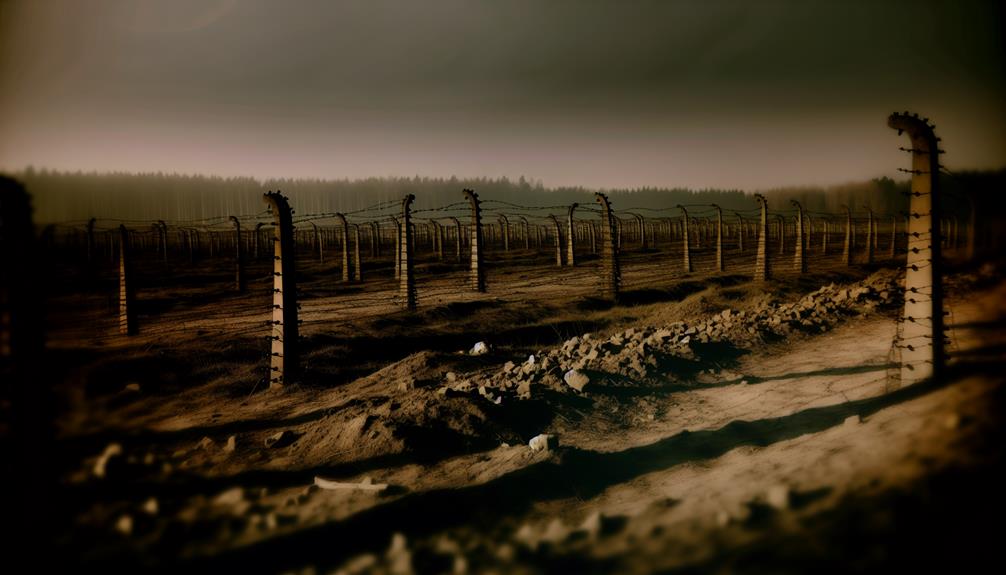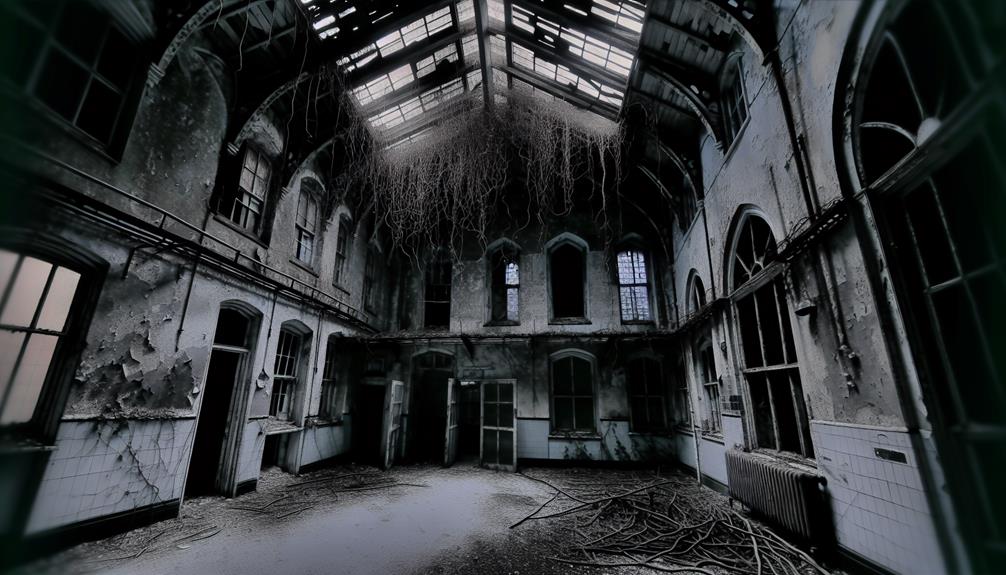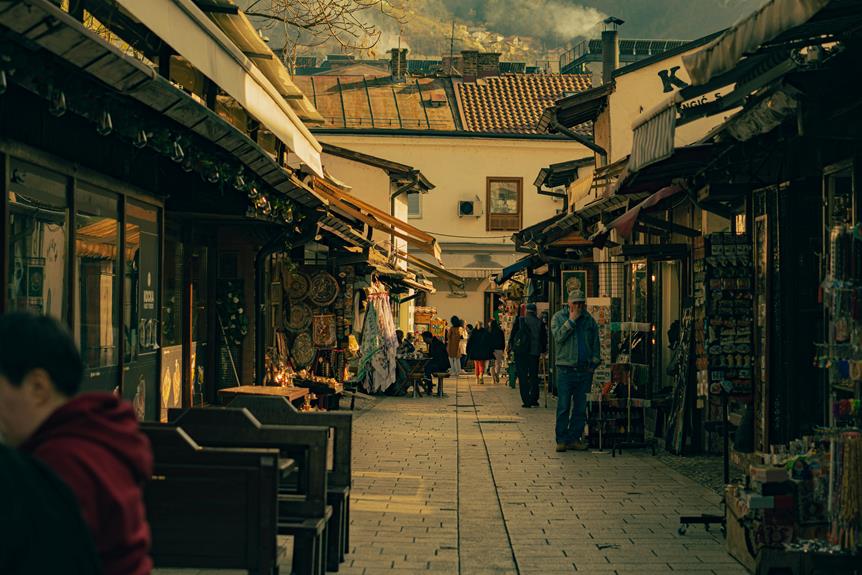Treblinka, a name that echoes with sorrow and suffering, holds a somber place in the annals of history as a stark reminder of humanity's darkest hour. The mere mention of this extermination camp evokes memories of the unspeakable atrocities committed within its confines. The story of Treblinka is not just one of death and despair but also of courage and resilience in the face of unimaginable odds. As we reflect on the tragic history of Poland's extermination camp, we are compelled to confront the depths of human cruelty and the enduring legacy of those who perished there.
Key Takeaways
- Treblinka: Nazi extermination camp in Poland during WWII.
- Operation Reinhard: Part of systematic genocide targeting Jews.
- Prisoner resistance: Acts of defiance and solidarity in the camp.
- Liberation: Uprising and historical significance of the revolt.
- Commemoration: Memorial services and educational programs honoring victims.
The Origins of Treblinka
The establishment of Treblinka as an extermination camp was deeply ingrained in the sinister depths of Nazi ideology and strategic planning during the Holocaust. Following the Nazi occupation of Poland in 1939, the regime aimed to eradicate any form of resistance, particularly from groups such as the Polish underground, which posed a threat to their authority. Treblinka, located in a remote area of Poland, was strategically chosen by the Nazis due to its proximity to Warsaw, making it easier to transport victims to the camp covertly.
The Polish resistance, despite its efforts, could not prevent the horrors that unfolded at Treblinka. The camp became operational in July 1942, with the primary purpose of carrying out the systematic extermination of Jews. The Nazis exploited the vulnerability of the prisoners, subjecting them to unimaginable atrocities and dehumanization. The Polish resistance, although valiant in its endeavors, was largely overwhelmed by the sheer scale of Nazi brutality and the meticulous planning that went into concealing the true nature of Treblinka.
As the world explores the history of Treblinka, it is important to acknowledge the complexities surrounding its origins. The intersection of Nazi occupation, Polish resistance, and the harrowing reality of genocide underscores the need for remembrance and reflection on the tragic events that transpired within the confines of the camp.
Construction and Layout of the Camp
Nazi architects meticulously designed Treblinka, orchestrating a layout that maximized efficiency in the systematic extermination process. The architectural design of Treblinka was sinister in its precision, intending to facilitate mass murder with chilling efficiency. The camp was divided into three main sections: the reception area, the extermination area, and the burial area. Each section played a pivotal role in the Nazis' genocidal operations, reflecting a macabre attention to detail in the planning of the camp.
The reception area was where victims arrived by train, deceived into thinking they had reached a transit camp. Here, they were stripped of their belongings and clothes before being herded towards the gas chambers. The extermination area housed the gas chambers and crematoria, where unspeakable atrocities took place on an industrial scale. Finally, the burial area contained mass graves where the remains of countless innocent lives were callously disposed of.
The logistical challenges of maintaining such a horrifying operation were immense. To illustrate the scale of the operation, consider the following breakdown of the camp's layout:
| Area | Purpose | Notable Features |
|---|---|---|
| Reception | Deception and Disrobing | False Promises |
| Extermination | Mass Murder | Gas Chambers |
| Burial | Remains Disposal | Mass Graves |
This table encapsulates the chilling efficiency with which Treblinka was designed, highlighting the calculated cruelty of its architects in planning and executing such a heinous operation.
Operation Reinhard: Implementing Genocide
Indisputably, the implementation of Operation Reinhard marked a harrowing chapter in the annals of human history. This systematic plan, named after Reinhard Heydrich, aimed at the extermination of Jews in occupied Poland during World War II. The operation commenced in 1942, with the construction of three death camps: Treblinka, Sobibor, and Belzec, specifically designed for mass murder. The meticulous implementation of Operation Reinhard by the Nazi regime led to devastating consequences, resulting in the deaths of over two million Jews.
The implementation of Operation Reinhard involved the deportation of Jews to these extermination camps, where they faced unimaginable horrors. Upon arrival, victims were stripped of their belongings, separated from their families, and herded into gas chambers disguised as showers. The sheer brutality and efficiency of the operation meant that within hours, thousands of lives were extinguished. The consequences of Operation Reinhard reverberate through history as a stark reminder of the depths of human cruelty and the importance of never forgetting the atrocities committed.
The systematic and industrialized nature of Operation Reinhard highlights the calculated inhumanity of the Holocaust. Each aspect of the operation, from the construction of the camps to the disposal of bodies, was meticulously planned to guarantee the swift and efficient extermination of Jewish populations. The legacy of Operation Reinhard serves as a haunting reminder of the darkest depths of human depravity and the imperative to uphold the memory of those who perished.
Life and Death Inside Treblinka
Amidst the harrowing confines of Treblinka, a stark reality of unfathomable suffering and death unfolded during the dark days of World War II. Within the camp's walls, prisoners faced unimaginable horrors, leading to the development of survival strategies as a means of coping with the brutal conditions. The emotional trauma inflicted upon those imprisoned within Treblinka was profound, leaving scars that would last a lifetime.
Survival within Treblinka was a constant battle against starvation, disease, and the ever-present threat of execution. Prisoners clung to any semblance of hope, whether it be through forming bonds with fellow inmates, finding solace in acts of kindness, or resorting to desperate measures to secure extra scraps of food. These coping strategies were born out of necessity, as each day brought new challenges and atrocities.
The emotional trauma experienced by those confined within Treblinka was overwhelming. Witnessing the dehumanization of themselves and their fellow prisoners, coupled with the constant fear of death, created a profound sense of hopelessness and despair. The psychological toll of living in such oppressive conditions cannot be overstated, as individuals grappled with feelings of grief, fear, and helplessness on a daily basis.
In the heart of Treblinka, where life and death hung in a precarious balance, the resilience and fortitude of the human spirit were tested beyond measure. The scars of survival and the deep emotional wounds inflicted within those barbed wire fences would leave an indelible mark on all who passed through its gates.
Resistance and Upheaval Among Prisoners
Within the confines of Treblinka, a tumultuous undercurrent of resistance and upheaval surged among the prisoners, reflecting a poignant defiance against the oppressive forces that sought to extinguish their spirits. In the face of unimaginable horror, the prisoners at Treblinka displayed remarkable resilience and bravery, defying their captors through various forms of resistance. The dynamics of uprising within the camp were complex, driven by a shared desire for freedom and dignity amidst the most dehumanizing conditions.
Prisoner solidarity formed the backbone of resistance at Treblinka. Despite the constant threat of violence and death, inmates banded together, offering each other support and strength in the face of adversity. This solidarity manifested in small acts of defiance, such as sharing meager rations or providing comfort to those in despair. These gestures may have seemed insignificant in the grand scheme of the camp's atrocities, but they served as a powerful symbol of humanity in the face of inhumanity.
The uprising dynamics within Treblinka took various forms, from acts of sabotage to clandestine attempts at communication and coordination. The prisoners, facing almost certain death, chose to fight back in whatever way they could, refusing to let their spirits be completely crushed. Their resistance, while ultimately unable to overcome the overwhelming power of the Nazi regime, stands as a testament to the strength of the human spirit in the most dire circumstances.
The Revolt and Aftermath
The Revolt at Treblinka culminated in a harrowing display of defiance and courage by the prisoners, leaving a profound impact on the course of history. As the prisoners faced unimaginable horrors, their spirits were not broken, leading to a remarkable act of resistance that shook the foundations of the camp.
Key Aspects of the Revolt and Aftermath:
- Prisoner Solidarity: The revolt at Treblinka was fueled by a deep sense of solidarity among the prisoners. Despite facing near-certain death, they banded together to resist their oppressors, showcasing remarkable strength and unity in the face of adversity.
- Struggle for Freedom: The aftermath of the revolt was a brutal crackdown by the Nazi guards, resulting in widespread reprisals and tragic consequences for the prisoners. However, the revolt symbolized the enduring human desire for freedom and dignity, even in the darkest of times.
- Legacy of Courage: The legacy of the revolt at Treblinka endures as a tribute to the resilience of the human spirit. It serves as a reminder of the importance of remembrance and honoring the sacrifices of those who stood up against tyranny, inspiring future generations to never forget the atrocities of the past.
In the wake of the revolt, the echoes of courage and defiance reverberated through the camp, leaving a lasting imprint on the collective memory of those who bore witness to this extraordinary act of resistance.
Liberation and Legacy
Following the harrowing display of defiance and courage during the revolt at Treblinka, the liberation of the camp marked a pivotal moment in the annals of history, ushering in a new chapter that would forever shape the legacy of those who had endured unimaginable suffering within its confines.
The liberation of Treblinka on July 23, 1944, by a Soviet offensive was met with a mixture of emotions. While there were liberation celebrations and a sense of relief among the survivors, the haunting memories of the atrocities committed within the camp lingered. The historical significance of this event cannot be overstated, as it symbolized the end of one of the most horrific chapters in human history.
| Liberation Celebrations | Historical Significance | Legacy |
|---|---|---|
| Survivors rejoiced at the sight of Soviet troops liberating them from the horrors of Treblinka | The liberation of Treblinka marked the end of the camp's operation and highlighted the resilience of the human spirit | The legacy of Treblinka serves as a somber reminder of the atrocities committed during the Holocaust and the importance of remembrance and education in preventing such horrors from happening again |
The liberation of Treblinka not only brought an end to the suffering of those held captive within its walls but also served as a reflection of the strength and perseverance of the human spirit in the face of unimaginable adversity. The legacy of Treblinka continues to serve as a stark reminder of the horrors of the Holocaust and the importance of honoring the memory of the victims.
Commemorating the Victims
In honoring the memory of the victims of Treblinka, it is crucial to establish a profound and lasting commemorative framework that encapsulates the magnitude of their suffering and the significance of their lives. Commemorating the victims of Treblinka goes beyond mere remembrance; it is about guaranteeing that their stories are told, their experiences are learned from, and their lives are honored in a meaningful way.
To achieve this, the following strategies can be implemented:
- Memorial Services: Organizing regular memorial services at the site of Treblinka can provide a space for collective mourning and reflection. These services can include rituals, speeches, and moments of silence to pay tribute to the victims and acknowledge the atrocities committed at the camp.
- Educational Programs: Developing educational programs that focus on the history of Treblinka, the lives of its victims, and the lessons to be learned from this tragic chapter can help ensure that future generations are informed and empathetic. These programs can include guided tours, workshops, and educational materials to promote understanding and remembrance.
- Interactive Exhibits: Creating interactive exhibits at museums or memorial sites can offer visitors a more immersive and engaging way to learn about the victims of Treblinka. These exhibits can incorporate personal stories, artifacts, and multimedia elements to provide a detailed view of the human impact of the Holocaust.
Reflections on Humanity and History
Reflections on the intersection of humanity and history reveal profound insights into the depths of human behavior and the enduring impact of past atrocities on collective memory. When contemplating the events that transpired at Treblinka, one is confronted with ethical dilemmas that force us to question the very essence of humanity. How could individuals commit such heinous acts against their fellow human beings? This unsettling inquiry leads us to explore the darkest corners of human nature and the fragility of ethical boundaries in times of extreme duress.
Yet, amidst the despair and horror of Treblinka, stories of human resilience emerge as beacons of light in the darkest of times. The narratives of courage, solidarity, and compassion displayed by some individuals in the face of unimaginable suffering serve as a proof to the enduring spirit of humanity. These tales remind us that even in the bleakest of circumstances, there remains a flicker of hope that can ignite the flame of resilience within the human heart.
As we grapple with the weight of history and the complexities of human behavior, we are compelled to confront our own capacity for both good and evil. Treblinka stands as a stark reminder of the consequences of unchecked hatred and the imperative to work towards a more compassionate and just world. In honoring the memory of the victims and survivors of Treblinka, we vow to never forget the lessons of the past and to uphold the values of empathy, tolerance, and solidarity in the face of adversity.
Frequently Asked Questions
How Did the Surrounding Community React to the Existence of Treblinka?
Community reactions to Treblinka varied, with some showing indifference, denial, or even complicity in the atrocities. Survivor testimonies shed light on the mix of fear, silence, and occasional acts of resistance within the surrounding areas.
The complexities of human behavior in the face of such horror reflect the struggle to reconcile the proximity of genocide with the normalcy of everyday life, prompting us to contemplate the moral responsibilities of communities in such dark times.
Were There Any Known Instances of Escape Attempts From Treblinka?
In the dark shadows of oppression, where despair cast a long, foreboding shadow, tales of escape attempts from Treblinka emerged as flickers of resistance against the tyranny of the human spirit.
Despite the harrowing odds stacked against them, a few courageous souls dared to defy the confines of their fate, seeking liberation from the clutches of dehumanization.
These acts of defiance, though few, symbolized the indomitable will to resist even in the face of unimaginable horror.
What Types of Medical Experimentation Were Conducted on Prisoners?
Various unethical medical experiments were conducted on prisoners in Nazi concentration camps. These included injecting infectious diseases, sterilization procedures, and testing new drugs. These atrocities led to severe suffering and death among the victims.
The ethical implications of such actions are profound, revealing a dark chapter in the history of medicine. While some argue that scientific advancements were made through these experiments, the moral cost of such practices remains a stark reminder of the importance of respecting human dignity and rights.
How Did the Nazis Dispose of the Bodies of the Victims?
In the harrowing aftermath of the atrocities perpetrated by the Nazis, the disposal of victims' bodies at extermination camps like Treblinka was a grim and methodical process. The Nazis utilized mass graves to hastily bury the deceased, aiming to erase all traces of their heinous crimes.
Additionally, a significant number of victims were incinerated in a brutal cremation process, a stark symbol of the callous disregard for human life that characterized this dark chapter in history.
Were There Any Significant Artifacts or Belongings Found at the Camp After Its Closure?
After the closure of Treblinka, significant artifacts and personal belongings were discovered, bearing silent witness to the tragedies that unfolded.
These items, ranging from everyday objects to cherished mementos, serve as poignant reminders of the individuals who perished within the camp's confines.
The discovery of such artifacts not only provides valuable historical insights but also plays an essential role in preserving the memory of the victims and ensuring their remembrance for future generations.
Conclusion
To sum up, the tragic history of Treblinka serves as a harrowing testament to the depths of human cruelty and suffering during the Holocaust.
Through acts of resistance and solidarity, prisoners demonstrated the resilience of the human spirit in the face of unimaginable horror.
Commemorating the victims and educating future generations about the atrocities committed at Treblinka are essential in ensuring that such atrocities are never forgotten or repeated.
The truth of this history must be acknowledged to honor the memory of those who perished in this dark chapter of humanity.


